It was past midnight in the Naga City gymnasium, and most of the Lumad, tired from three days of traveling by land and by sea, have retired to sleep inside their malongs. But not Datu Magal. He sits alert and upright, silently watching over his people as they slowly settle into the night’s oblivion. In a few days, they will reach Manila to demand Pres. Benigno Aquino III to heed their call to stop the killings of the Lumad people—now numbering 53 under his term.
Datu Magal or Mauro Manselohan, 60, is a leader of the Banwaon tribe in the community of Tabon-Tabon, Brgy. Mahagsay, San Luis, Agusan del Sur. Banwa means home, or the place you live. “If you relocate, you can no longer be considered a Banwaon,” he said.
But right now, Datu Magal is a Banwaon without a banwa or a home. Since last year, he has been hunted by the notorius paramilitary Magahat-Bagani Force—whom he claims were formed within the CAFGU (Citizen Armed Force Geographical Unit) units under the direct supervision of the Philippine Army. “We are forced to go into hiding, because the soldiers already killed one of our leaders,” he said.
Last December 22, 2014, a datu and village chief of nearby Brgy. Balit, Nicasio Precosio, was shot to death while the 26th Infantry Batallion was conducting Community Organizing for Peace and Development (COPD). The COPD is a term for civil-military operations under Oplan Bayanihan, the Aquino government’s counter-insurgency program.
Precosio was killed by whom the community identified as two CAFGU members under the 26th IB who interrogated Precosio the day before, accusing him of being a member of the New People’s Army (NPA). The datu was on his way to the municipal hall to complain about the COPD operations when he was shot.
According to the Armed Forces of the Philippines’ Civil Relations Service, the COPD teaches soldiers “how to effectively and efficiently deal with insurgency by enjoining all government agencies, NGOs and other stakeholders by working together to address important issues.”
But for the Banwaon, it is just another term for terror.
Paramilitary for mining
After Precosio’s killing, mass evacuation in the Balit and Mahagsay villages began. The Banwaon only returned to their homes after three months. But their datus, fearing for their lives, were not amongst them anymore. This was because the 26th IB continued to conduct COPD operations. Along with this, the Magahat-Bagani started to roam houses to look for the datus.
Datu Magal recounts that he and two other datus earned the ire of the Magahat-Bagani when they refused to sign documents for a Certificate of Ancestral Domain Title (CADT) applied for by a datu identified as Mario Napungahan. Napungahan was a CAFGU. The CADT aims to cover 18,000 hectares of the Banwaon’s ancestral land.
But the datus have already “learned their lesson.” Previously, a datu in Brgy. Lydia in the nearby town of La Paz, already made some of them sign for a CADT–only to discover that it was to pave the way for the exploration of a mining company. This datu, identified as Benhur Mansulunay, became a leader of the Magahat-Bagani and are now forcing the Banwaon to sign a Memorandum of Agreement with Malampay Mining Inc.
According to the Mines and Geosciences Bureau, the Caraga region has the biggest iron ore deposit in the world, the largest nickel and gold deposits in the country, and large reserves of copper, chromite and coal. In the towns of San Luis and La Paz in Agusan del Sur alone, two mining companies–Tambuli Mining Company Inc. and Malampay Mining Inc.–are known to have secured the rights to 15,000 hectares each for mineral exploration and production. Another mining company, Metro Luxury Mining Corp., is said to be exploring the area as well.
Under the Indigenous Peoples Rights Act, after the approval of a consolidated CADT, “Free, Prior and Informed Consent” can be obtained by the companies to enter the Lumad’s ancestral domains. But this consent is often hardly won peacefully.
According to Datu Magal, the Magahat-Bagani Force is not just being used in counter-insurgency (which benefits the military “because the Lumad know the terrain well, and the soldiers will have someone else to blame for their atrocities”). It is also being used by mining companies to divide the community and suppress their resistance to the mines.
The most feared of the Magahat-Bagani in his community are in fact relatives of Napungahan, the CAFGU who facilitated the CADT, the Datu Magal said. “In our tradition, there is no need for titles,” he insisted. But datus who refuse to sign the ancestral land claim are tagged as NPA rebels (“kapit ng NPA”) and threatened with force.
Food blockade
There is hardly anything “peaceful” about the Army’s operations for “peace and development,” said Julito Otacan, secretary-general of the local Lumad organization Tagdumahan and a resident of Brgy. Balit. Neither do they bring any concrete “development” to speak of, he added.
On the contrary, Otacan spoke of how the military’s presence hinders their daily life. He said that farmers are being prohibited by the military from staying too long in their fields— those who did were accused of having been inside an NPA camp and interrogated for hours, with only three questions being asked over and over again: “Where have you been?” “Where is the NPA?” “Who are the NPA?”
Food blockade is also imposed. During the lean months when there is no harvest of palay, the Banwaons have to trek for a day to reach the road, and hire a motorcycle for P2,500 to take them to the municipal market and buy rice. For all this effort, they are only allowed by the military to buy a maximum of 10 kilos of rice—to buy one sack is to be accused of feeding the rebels.
Ten kilos is not just a friendly suggestion either. Before heading back home, the villagers are required to pass by the detachment of the 26th Infantry Division in Brgy. Santa Rita for a “safe conduct pass.” “This piece of paper proves that we only bought 10 kilos,” Otacan said. The pass is then presented to the soldiers and CAFGU back in their village.
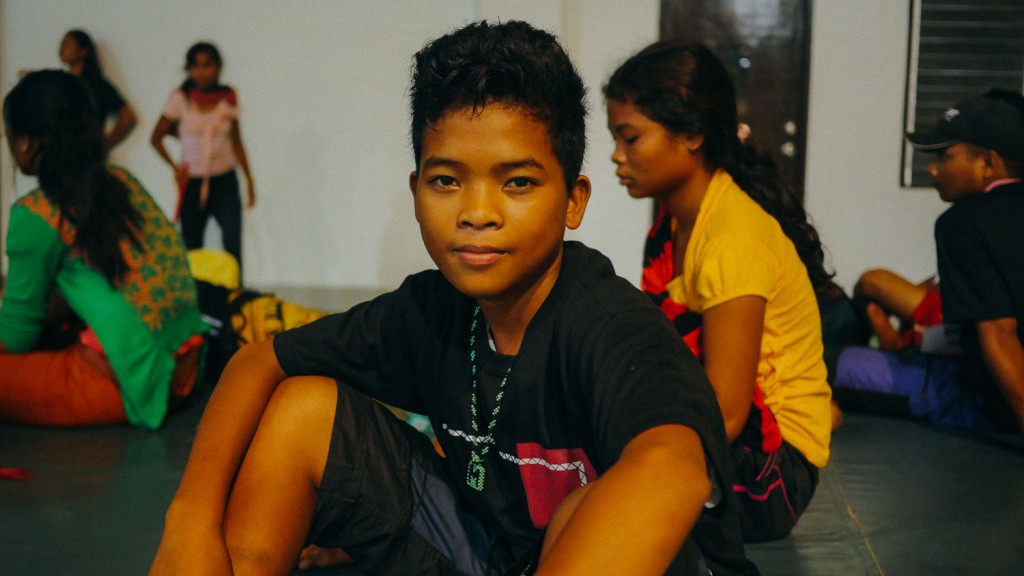
Shooting at children
Even children are being shot at “like animals,” he said.
Marvin Hogsalan of Sitio Kandiisan, Brgy. Mahagsay is loud and playful when around other children. Charming at age 14, he even knows how to pose for the camera. But his eyes turn hard and his tone goes soft when asked to talk about militarization in his banwa.
Last December 2014, Marvin and his fellow students and teachers were having a Christmas party in the Rural Missionaries of the Philippines (RMP)- Literacy Numeracy School when they heard gunfire in a higher mountainous area. For that, they decided to go home early. On the way home, they were accosted and interrogated by members of the 26th IB. “They accused us of being students of the NPA, and our teachers as teachers of the NPA” he said.
This was corroborated by Michael Sumbien, a RMP monitoring staff who was also present during the incident.
When they were finally let go and were able to cross another mountain, two military helicopters then approached. “In a few minutes, we were fired upon from the helicopters. We even saw the soldiers from the 26th IB because it was flying so low. We ran for cover,” Sumbien recounted.
Soon after, the community was finally forced to evacuate—and Marvin’s schooling was temporarily stopped. For now, the RMP school is still operating. But students and teachers have had to devise of ways to avoid the military and paramilitary forces, which they say are recruited by the 26th IB as part of its COPD operations.
In the nearby town of La Paz alone, four RMP schools have been forced to close down because the military have encamped in them. According to the Save Our Schools Network, 87 Lumad schools across Mindanao are under attack from military and paramilitary forces.
“I am scared that one day, our school will also close down, like what happened in other communities. All we want is to be able to read and write, so that we will become teachers of the next generation,” Marvin said.
Meanwhile, Datu Magal, who has been a community leader since 1984, intensely feels his separation from his banwa. Although younger leaders have sought to fill his absence, he is desolate that he can no longer lead his people like he used to. “I cannot also take care of my family and my farm very well,” he said.
‘Peace and development’?
On October 26, the Lumad–numbering around 700 from different parts of Mindanao–finally reached Manila. Through a series of protest actions, they reiterated their demands for the pull-out of military and paramilitary forces in their communities as the only way to immediately stop the killings and the ongoing humanitarian crisis. Thousands of Lumad from different tribes remain in dire conditions in city evacuation centers because of continued military operations in the countryside.
But instead of acting concretely on the Lumad’s demands, the Aquino government seems to only want more of the same. “The government will continue to uphold peace and development in all affected places to ensure uninterrupted delivery of public service,” said Presidential Communications Operations Secretary Herminio Coloma Jr.
For the Banwaon of Agusan del Sur, though, “peace and development” are not just meaningless terms coming out from a government official’s mouth—they could mean real bullets coming out of the barrel of a soldier’s rifle. They have learned, too, that “peace and development” means just its exact opposite—violence and the lack of a banwa or home.

![It was past midnight in the Naga City gymnasium, and most of the Lumad, tired from three days of traveling by land and by sea, have retired to sleep inside their malongs. But not Datu Magal. He sits alert and upright, silently watching over his people as they slowly settle into the night’s oblivion. In […]](https://www.altermidya.net/wp-content/uploads/2019/09/banwaon-small-size-2-1000x600.jpg)
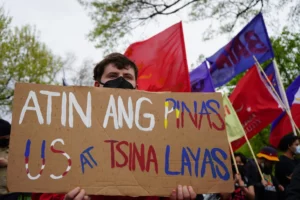
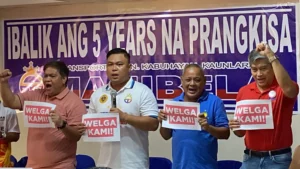
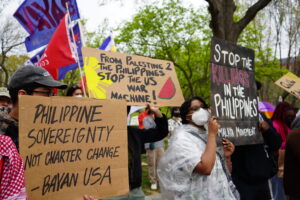
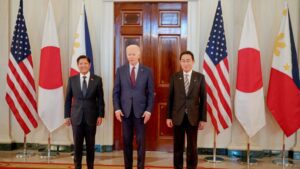
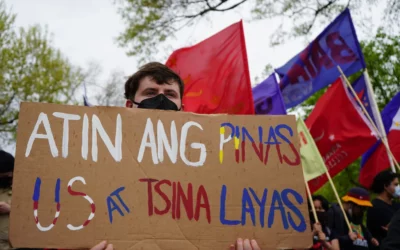
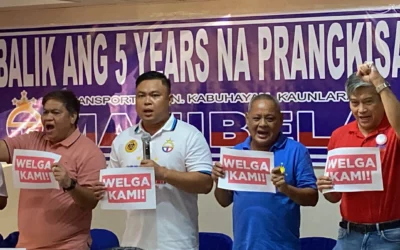
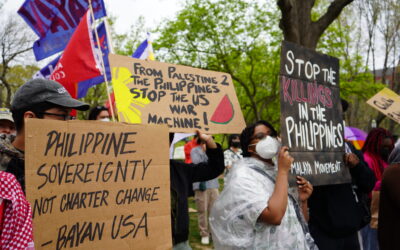
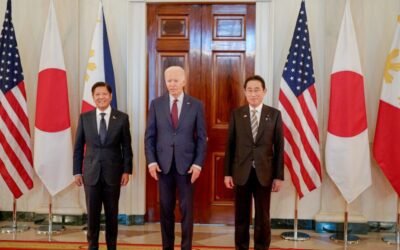
0 Comments